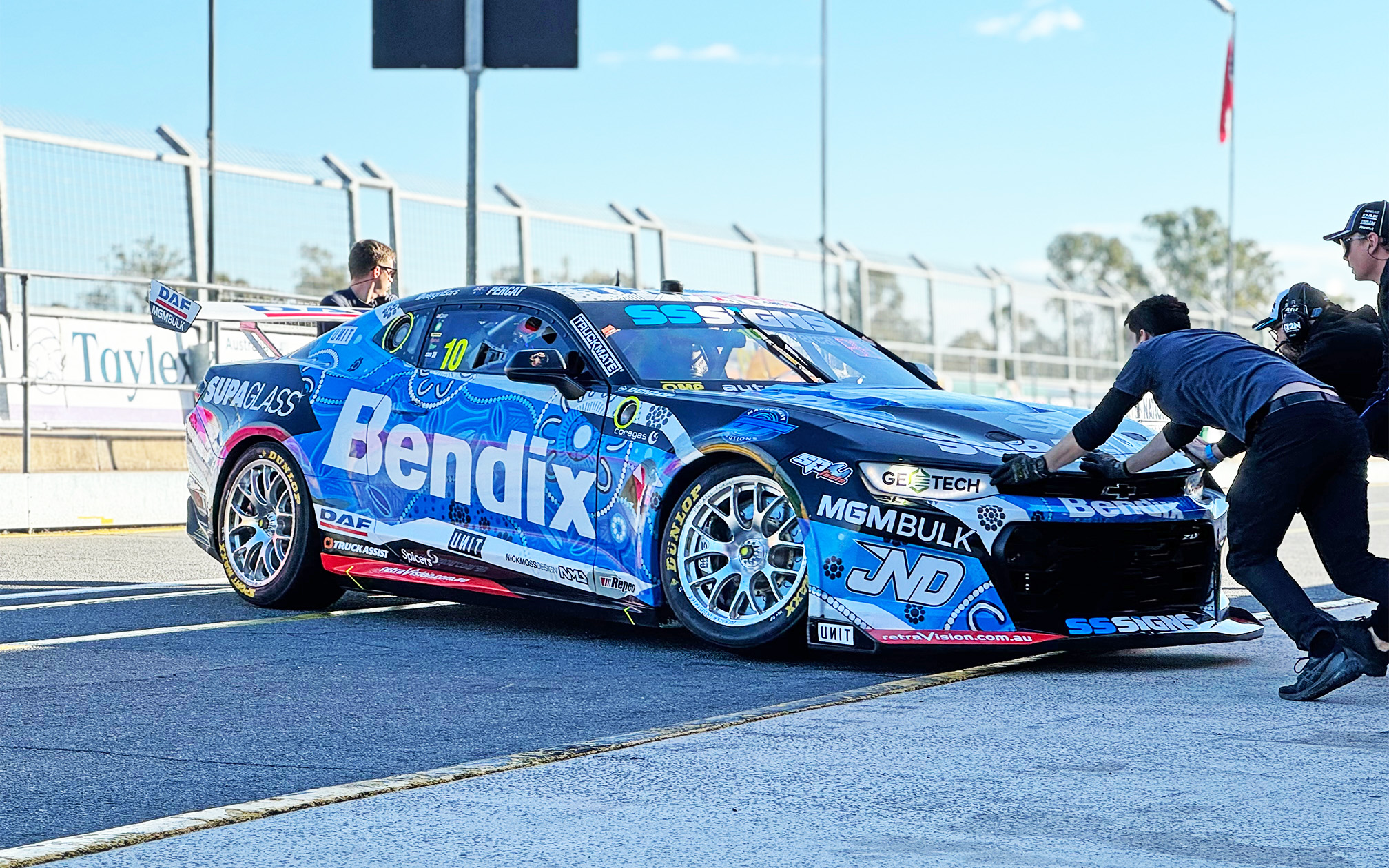Sports
Supercars Testing New Tyre for 2025 Season

Following the recent practice sessions in Sydney, a prominent tyre testing initiative has commenced within the Supercars category, spearheaded by notable drivers Brodie Kostecki, Cameron Waters, Andre Heimgartner, and Richie Stanaway. This move aims to assess the viability of a new single control tyre manufactured by Dunlop, which may come into effect for the 2025 Supercars season.
The testing process kicked off at the Queensland Raceway, where the new Dunlop ‘Development’ tyre was evaluated against the current Soft, Super Soft, and Hard tyres. The purpose of these tests extends beyond the current racing season, as no further evaluations are scheduled to occur during this year’s championship events.
Tim Edwards, the head of motorsport, emphasized that the goal of introducing the new tyre is to enhance the excitement and competitiveness of races, marking a significant shift in strategy for the series. He remarked on the broader implications of the tyre usage in the overall framework of next year’s racing, stating that “nothing is off the table.”
To facilitate the tyre test, operations were conducted with single representation from two distinct racing teams: Dick Johnson Racing and Matt Stone Racing. During the test, Will Davison took charge of the Ford Mustang, while Nick Percat drove the Chevrolet Camaro. These teams, based in Queensland, were identified as having the capacity to perform the necessary testing, and arrangements allowed them to operate independently, while maintaining synchronized test runs.
Dunlop’s involvement in this endeavour was significant, with the company bringing an initial stock of 60 sets of the Development tyre. However, less than half of these tyre sets were utilized during the testing sessions. Edwards revealed, “We compared the Development tyre to the three incumbents, and we learned a lot from the experience.”
The test involved comprehensive 25-lap runs designed to evaluate both the Development and Super Soft variations of the tyre, encouraging direct comparisons for speed and performance. When probed on the specifics of lap times and degradation rates, Edwards chose not to disclose sensitive data, focusing instead on the overall objective of ensuring that the Supercars drivers have tyres that enhance the racing experience.
Despite the mystery surrounding exact performance outcomes, Edwards shared that both participating drivers clocked over 500 kilometers throughout the test day, indicating a thorough evaluation process. “The focus was not on tuning the cars but rather on consistent performance during each run,” he explained, noting that multiple 25-lap runs were essential to validate reliability.
With a promising outlook from the test’s inaugural run, further testing is being planned. Edwards mentioned, “Having consumed around 20 of the new Development tyres, we still have around 40 available for future tests.” He acknowledged the challenges of testing during a race weekend and indicated potential plans for both pre and post-event evaluations.
The overarching priority, according to Edwards, is not about cost-saving strategies, rather it is about delivering the most thrilling racing experience possible for spectators. The insights gained during these tests will shape the future of tyre strategy in the Supercars Championship, with critical decisions needing to be made by August to facilitate production for the next season.
Elucidating on the Development tyre’s characteristics, Dunlop’s Kevin Fitzsimons confirmed that changes are limited to the compound, with no alterations made to the structural components or casing of the tyre. This information should provide teams with a degree of comfort regarding the adjustments they may need to consider moving forward.
As anticipation builds towards Round 7 of the 2024 Repco Supercars Championship at the Sydney Motorsport Park, teams continue to navigate the complexities of track performance and tyre management. The circuit, with its demanding corners and long straights, poses unique challenges that require adept handling and strategic planning from both drivers and engineering teams.
Tyres will definitely play a pivotal role in this upcoming event. Last year, drivers averaged a considerable degradation rate of 0.08 seconds per lap here, which was indicative of the track’s tough nature. The potential for improving tyre life could heavily influence race strategies, particularly during pit stops where teams are likely to opt for replacing all four tyres due to the high wear experienced.
As the countdown continues to the championship race weekend, the significance of track limits becomes magnified. With timing loops installed at critical track locations such as Turns 5, 8, and 10, drivers must remain vigilant to avoid penalties that could potentially impact their qualifying positions and overall race performance.
This year promises to deliver an exciting array of challenges for the Supercars teams, and the outcomes from the recent tyre testing will play an essential role in shaping both the immediate and future competitive landscape. As preparations continue, fans eagerly await to see how these developments will influence the thrilling atmosphere of the Supercars Championship.












